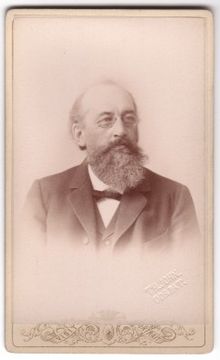Edmund Russow | |
|---|---|
 | |
| Born | 24 February [O.S. 12] 1841 |
| Died | 11 April [O.S. 30 March] 1897 (aged 56) Yuryev, Yuryevsky Uyzed, Governorate of Livonia, Russian Empire (present-day Tartu, Tartu County, Estonia) |
| Nationality | Baltic German |
| Alma mater | Imperial University of Dorpat Friedrich-Wilhelm University of Berlin |
| Scientific career | |
| Institutions | Imperial University of Dorpat |
Edmund August Friedrich Russow (Russian: Эдму́нд Фридрихович Ру́ссов, romanized: Èdmúnd Fridrichovič Rússov; 24 February [O.S. 12] 1841 – 11 April [O.S. 30 March] 1897) was a Baltic German biologist.